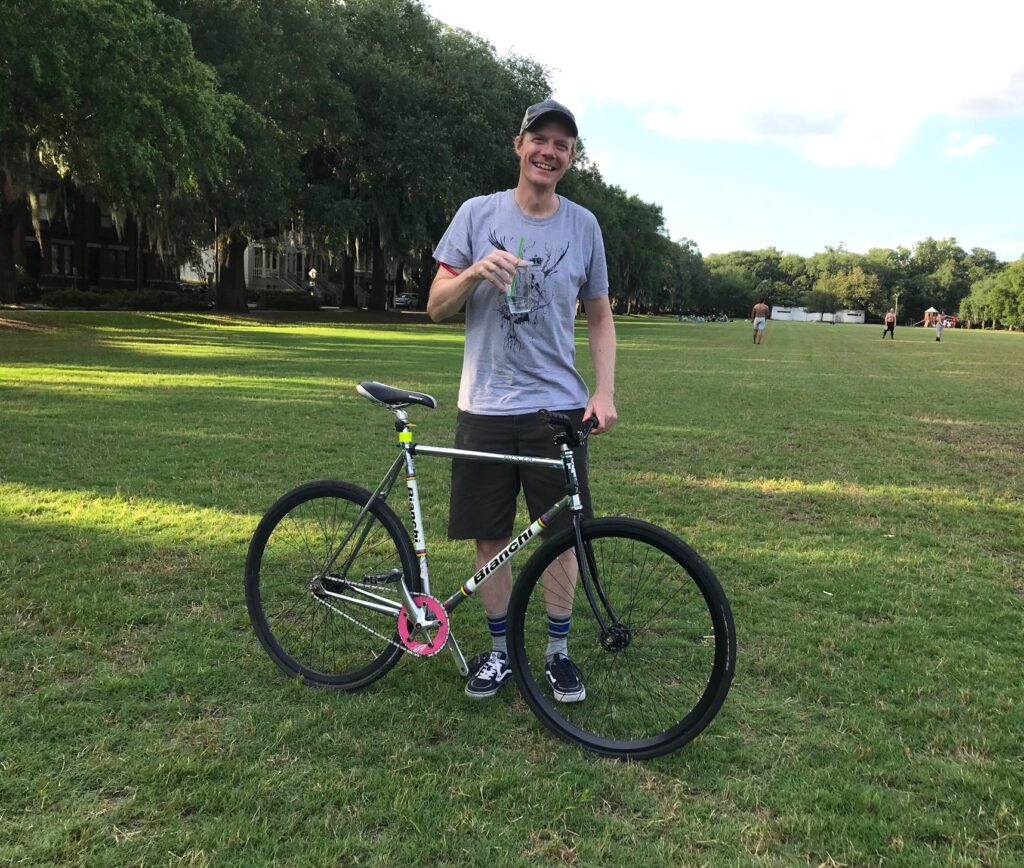I’ve been riding bicycles—what the pataphysician, playwright, and avid cyclist Alfred Jarry called “That Which Rolls”—almost as long as I’ve been walking. I haven’t had a car since 1998, so bicycles have been my primary mode of transportation as an adult. Just after I built a new Big-Boy Bike a few years ago, a young friend asked me for some bike-building advice. I found myself qualifying my advice more than actually giving him any. I was trying to explain that I grew up riding BMX bikes, so I approach other builds from that background.

The friend in question was in his early twenties, and as I started explaining my involvement in BMX in the 1980s, I noticed his brow crinkling. He didn’t get it. The further I went, the more I realized that I was attempting to bridge a generation gap.
My bike-curious friend didn’t seem to believe that BMX could’ve been that big in my youth. During my competitive Freestyle (as BMX trick riding was called back then) days, I lived in Southeast Alabama. We had bike-shop-sponsored local contests every other weekend and regional ones monthly, as well as shows to do and the occasional national event thanks to the AFA (American Freestyle Association). From the early-to-mid-1980s to the early 1990s BMX was hectic: My age class in those national contests often boasted well over a hundred entrants. One thing I tried to explain to my friend was that though we played video games (e.g., Atari, Nintendo, arcade games, etc.), riding one’s bike was still way more exciting. Our hands were far more likely to be found on BMX grips than joysticks.

Therein lies the first major difference: The experience of a BMXer today is much more likely to be mediated by technology than it was during any previous era. Given the proliferation of technology into every aspect of our lives, that’s not much of an insight, but in addition to the lack of distractingly immersive video games, the riders of thirty years ago were also missing out on the parks. There were like three ride-able skate parks in the whole country. Now there are at least that many in every city of any size whatsoever. Where the past was spent riding curb cuts, banks, walls, streets, and backyard ramps, today the terrain consists of those as well as many human-made options. It makes for different bikes, different riding, different tricks, and different values.
Flatland used to be one-half of Freestyle BMX. Now it is obscured out-of-sight in parking structures and flat driveways. Its intricate moves and flowing connections do not translate to television coverage. The pedestrian spectator nor the beginning rider are able to tell the difference between difficult and impossible (I covered this more thoroughly years ago in a story for ESPN). The same can be said for other kinds of riding: flow and style are less valued than the big trick. One huge trick at the X-Games can make a career.
Riders still go looking for street spots and terrain to tackle, but back in the day—aside from backyard raps and plywood propped up on bricks—that’s all there was. The spread of skateparks changed not only the scarcity of spots, but the spread of information about those spots. Having a central place to meet and exchange ideas changes the dynamics of a local scene thereby affecting overall progression of the sport.
With that said, nothing has changed the collective knowledge of BMXers more than mobile technologies. Before cellphones, cameraphones, iPhones, smaller and smaller digital cameras and video cameras, and even the web, riders relied on a handful of magazines and zines to keep up on what was happening: new companies and products, who was riding for whom, and—more importantly—who was doing what new tricks. An individual or crew in some remote enclave could be light years ahead of the overall curve of the sport and no one would know. For example, when Kevin Jones burst onto the flatland scene in the late 1980s, it was due in part to his appearances at national AFA contests which were covered by the major magazines, but knowledge of Kevin’s progression was largely spread through the mail by zines and videotapes. Hiding such talent is much more difficult now—even if you try. Can you imagine Mat Hoffman’s Highest Air Ever happening in total obscurity today?

Mobile media can make one famous. Like the X-Games, one huge trick—or one huge crash—captured on camera and immediately distributed online might not make a career, but it can make someone an instant star.






